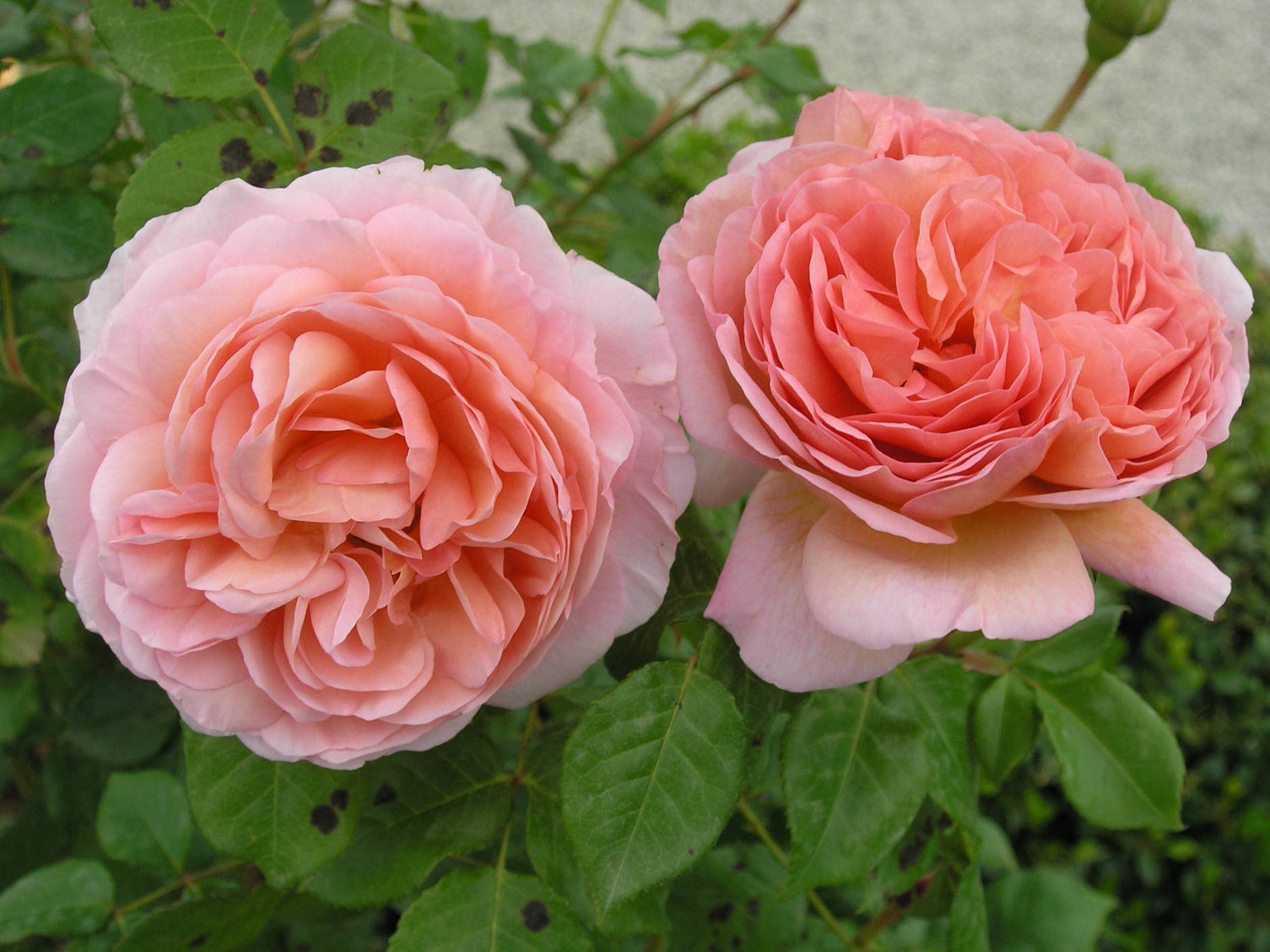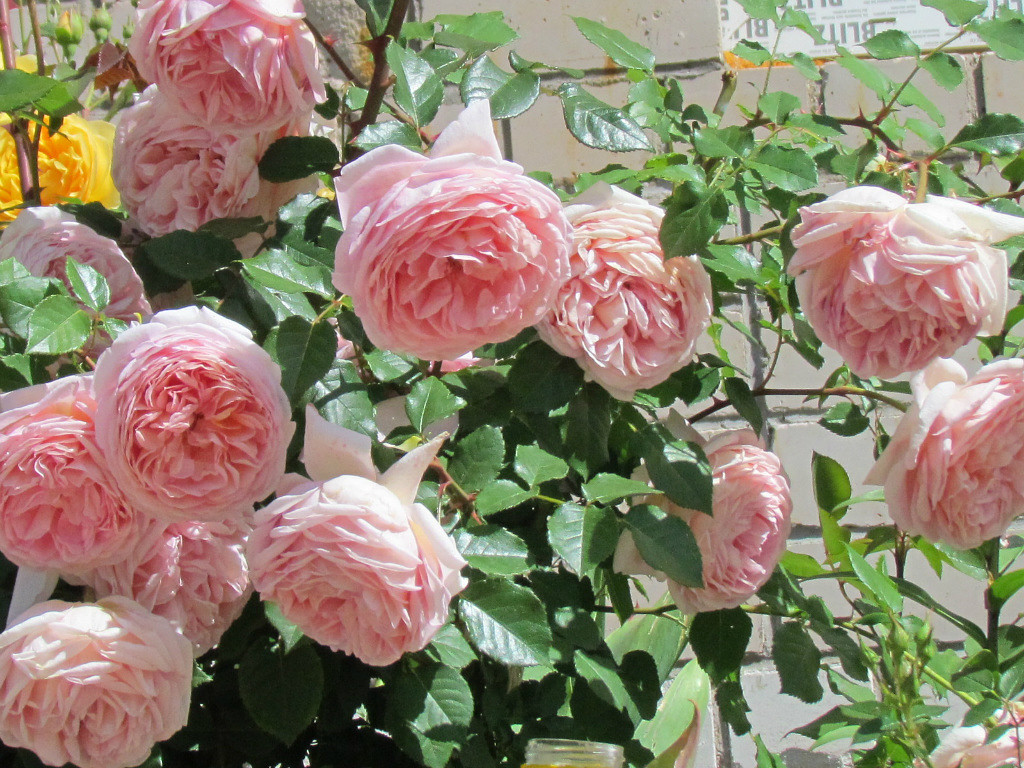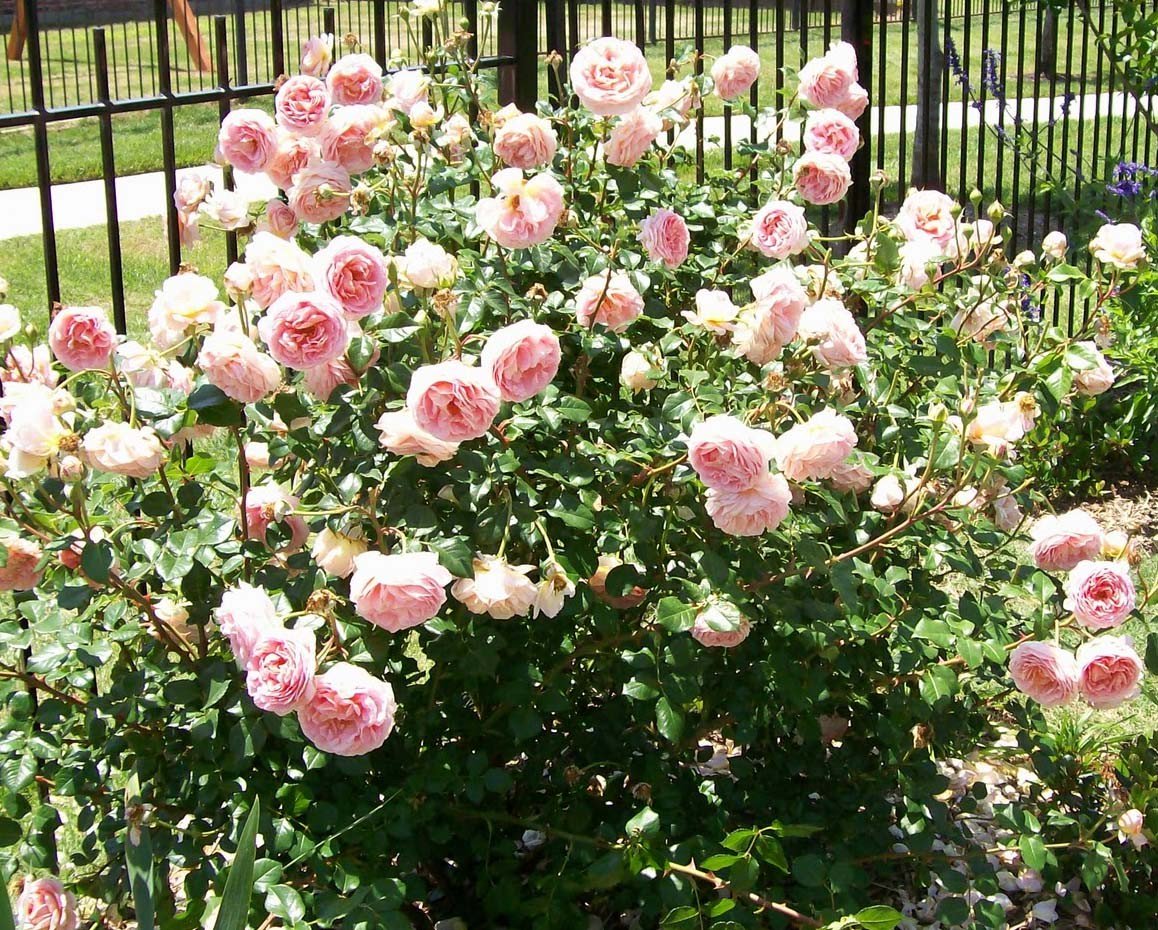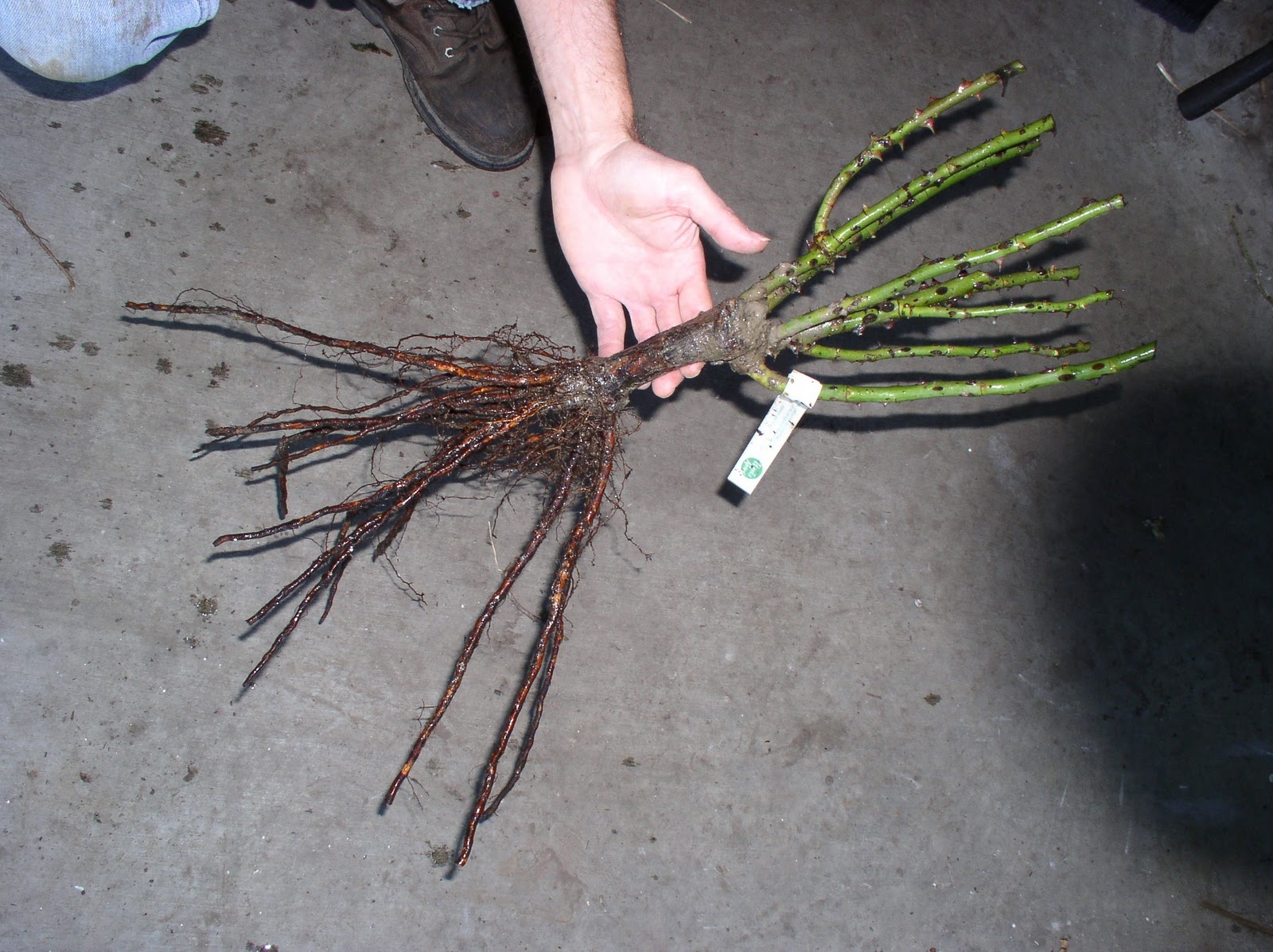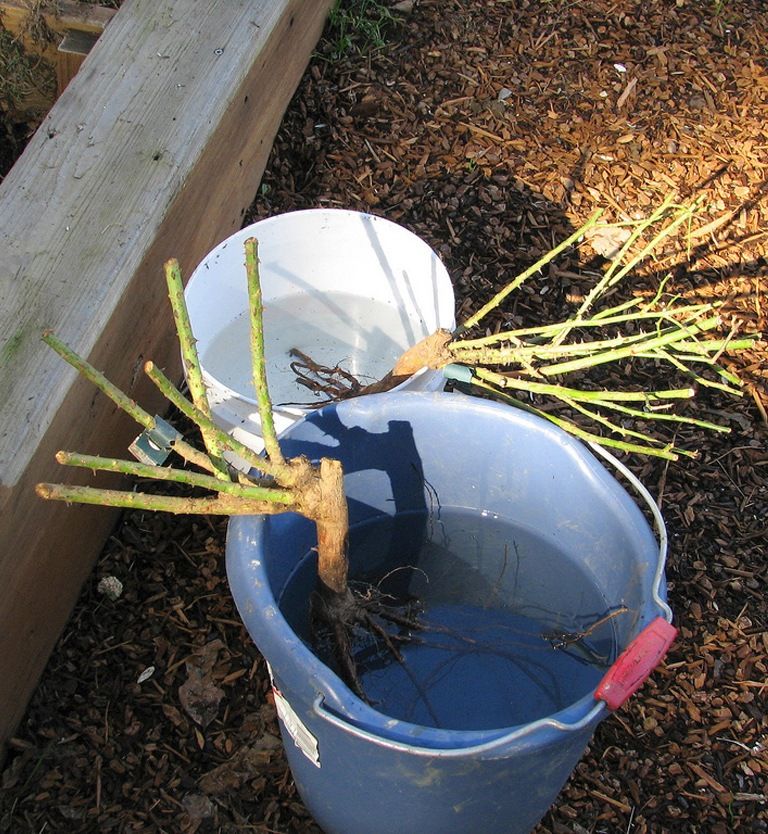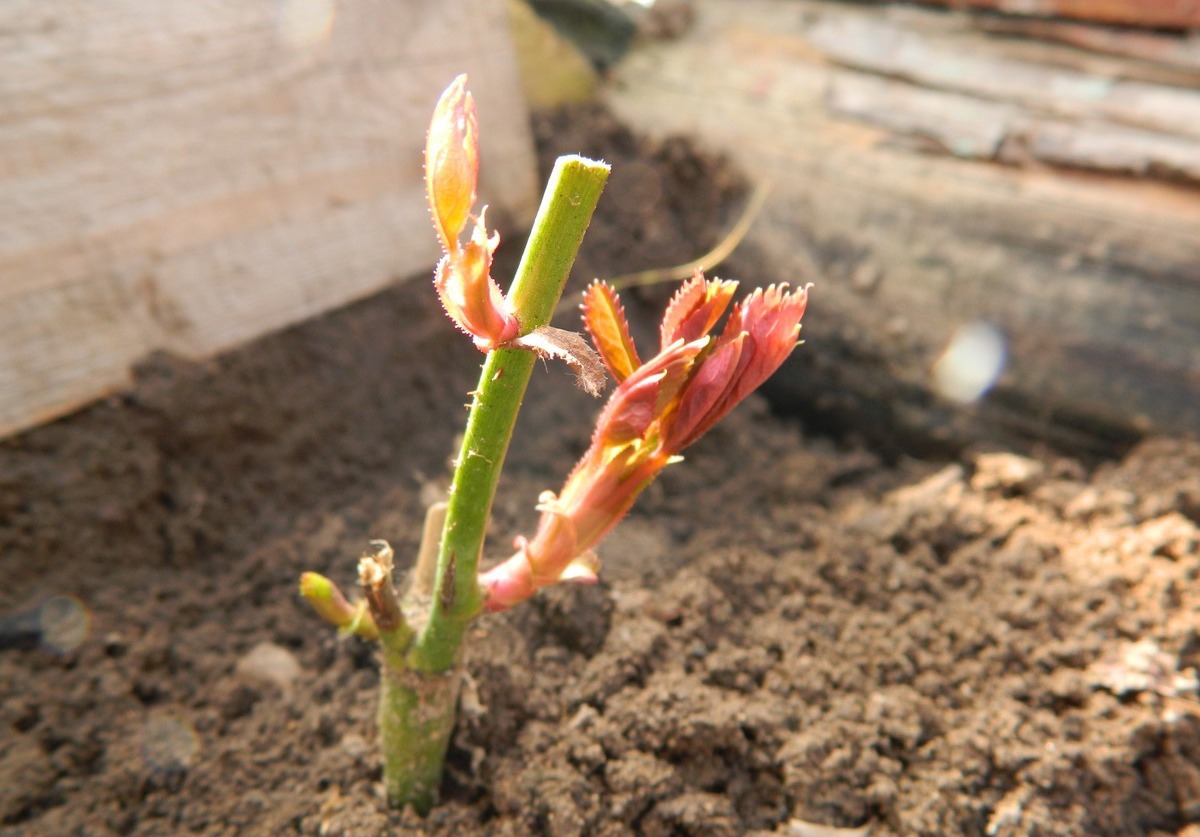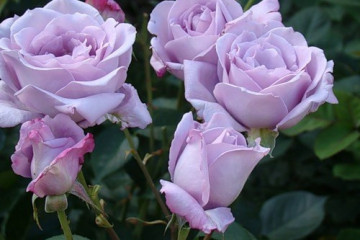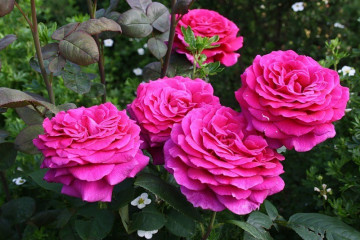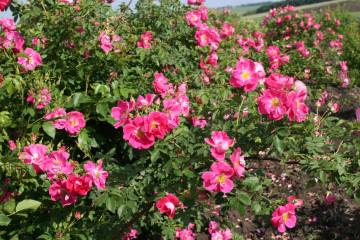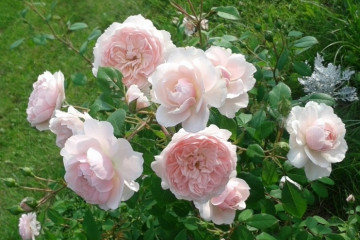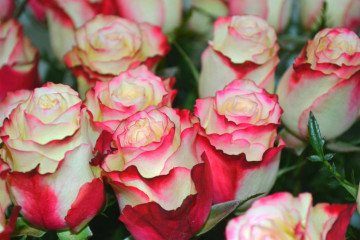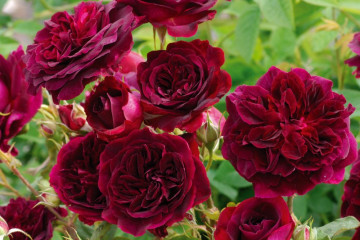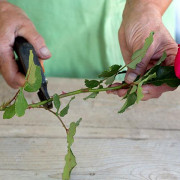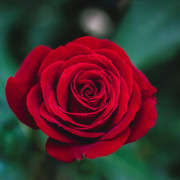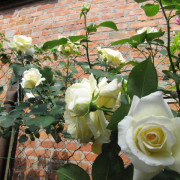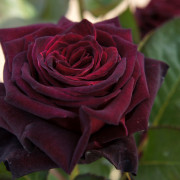Rose Abraham Derby (Abraham Darby) - description of varietal flower
Content: [Hide]
Lush, peony-like, delicate pink-apricot flowers with a stunning aroma - this is the beautiful Abraham Derby rose, unusually lush and spectacular. For more than 20 years, it has served as a business card, everywhere recalling the existence of the world-famous English roses of David Austin.
Rose Abraham Derby (Abraham Darby) - what is this variety
The variety was obtained in 1965 by crossing two varieties:
- polyanthus yellow rose Yellow Cushion;
- climbing pink-red rose Aloha.
The resulting result went on sale under several names in addition to Abraham Derby: AUScot, Candy Rain, Country Darby.
Brief description, characteristic
A double flower of 70 petals has a cup-shaped shape, which is classic for old park roses. The petals are painted in a copper-apricot shade in the central part of the corolla, and pink closer to the edges. A powerful bush with a height of 1.2 to 3.05 m can be formed by pruning into a compact and rounded, up to 1.5 m in diameter. Or you can give it the appearance of a climbing rose. But in any case, the rose bush will be strewn with flowers.
The foliage is abundant, green, shiny. Flowering occurs in alternating long waves.
Rose corollas are changeable in color. In the heat, their hue becomes apricot, and in the cool it goes into a rich pink. Sleeping is reluctant. Among English roses, Abraham Derby is considered the largest, its buds in full dissolution reach 15 cm in diameter.
Forcing occurs at the ends of annual shoots in clusters of 1-3 flowers. The strongest aroma has typical pink, strawberry and fruity notes.
Advantages and disadvantages of the variety
The advantages of Abraham Derby are:
- Spectacular view of flowering bushes.
- Continuous long flowering.
- Unusual size of flowers.
- Strong persistent aroma.
Among the shortcomings, it is worth noting the average resistance to diseases, low frost resistance, the ability to burn out in the heat, as well as deterioration of flowering when flooded, in drought and in the shade.
Use in landscape design
The Abraham Derby variety is often referred to as a scrub, as the bushes are vigorous. But in fact, the rose is more often planted at the supports in order to let its whips along the trellis.
With such a solution, it is much more profitable to show the beauty of flowers, often drooping under their own weight. When creating mixborders, bushes are planted in the background.
Growing a flower, how to plant it in open ground
Get an excellent result - a strong, profusely blooming rose bush will allow you to follow the basic rules for planting English park roses.
In what form is the landing
It is possible to purchase a varietal seedling only in a specialized nursery, where supplies are carried out from European garden centers. The optimum age of the planting material is 2-3 years.Such a bush is able to winter well and quickly adapt to a new place.
Seedlings with open or closed root systems are on sale. When buying, pay attention to the condition of the shoots and roots. The roots should not be overdried, and the shoots should not have suspicious stains and traces of rot. The living root does not crunch or break when bent. Some of the shoots may be lignified, but the rest are covered with green bark.
What time is the boarding
Planting is allowed in spring and autumn.
- Spring (in April) - more profitable, since the bush has more time for rooting and building up the ground part.
- Autumn (September) planting gives an advantage in growing roots, which increases the chances of first blooming next summer.
Location selection
Rose Abraham Derby cannot stand the shade, so a place for her is chosen only on sunny areas. It is desirable that a slight shading be created at noon.
The plant will show its beauty in the absence of strong winds and protection from heavy rain. It's good when there is a tall tree with a lacy crown nearby. If you choose a highly ventilated place for planting, then the bush can even drop leaves and buds in bad weather.
How to prepare the soil and flower for planting
Heavy, waterlogged soils are not suitable for planting. The best solution is to dig a large planting hole over the size of the root system and fill it with a layer of drainage and loose soil mixed with humus and sand.
The roots of seedlings with an open root system are shortened, getting rid of damaged and dried out areas. Shoots must be shortened, leaving no more than 6 live buds on each of them.
Planting procedure step by step
Planting seedlings is performed in the following sequence:
- Shovels dig planting holes to a depth of one and a half bayonets. The distance between individual bushes is 1.5 m or more.
- A layer of 5-8 cm thick drainage from broken brick, fine expanded clay or clean sand is poured onto the bottom.
- The nutrient substrate is prepared by mixing the soil with a neutral acid-base reaction (pH = 5.5) with the same amount of peat by volume, adding sand, vermiculite for looseness, and at least 3-4 kg of compost.
- The seedling is lowered into the hole, deepening the root collar by 5-7 cm.
- The roots are covered with the prepared substrate.
- Watering.
- Mulch the soil around with sawdust, pine bark, coniferous litter, peat.
Rose bush care
The agricultural technique for growing park roses is generally standard. To get beautiful flowers, you should protect them from diseases and pests, feed and water them in time.
Watering rules and humidity
The desired watering frequency is every week. If it rains often enough, you don't need to water at all.
The optimal water consumption is 10-12 liters for each bush. In autumn, irrespective of the weather, watering is stopped. Young shoots should not grow back with the arrival of September.
Top dressing and soil quality
In the first year after planting, you can do without top dressing. The prepared substrate contains everything you need for active growth.
In subsequent years, the entire feeding season is carried out at intervals of 2 weeks. Specialized complex fertilizers are suitable, for example, Agricola for Roses, superphosphate, as well as organic compounds - humate, mullein. The soil should be well loosened and free of weeds.
Pruning and replanting
When the shelter is removed from the roses in the spring, it is necessary to do sanitary pruning. To obtain a compact bush, the shoots are shortened by two-thirds.To form a tall and spreading bush, only diseased and damaged branches are cut off, and healthy ones are raised and tied to a trellis.
Since the depth of the root system can reach 2 m or more, it is not recommended to transplant adult roses. They do this only in a desperate situation. The plant will be sick after that for at least 2-3 years, the risk of death is high.
Features of wintering a flower
When performing covering measures, the Derby rose has winter hardiness up to -29 ° C (zone IV). With the arrival of frost, the bushes spud, cutting out excess (unripe, twisted, diseased) shoots. For hilling, dry soil is mixed with sand.
Climbing bushes are bent to the ground (untied from the supports), covered with agrotextile or spruce branches, so that in winter the snow accumulates on top of a snowdrift. Low young roses can be covered with ordinary cardboard boxes, crushing them with a weighting agent from being blown away by the wind. Remove shelters after complete thawing of the soil.
Blooming rose
With proper agricultural technology, for more than one decade in a row, throughout the summer months, the Abraham Derby rose will delight with its magnificent flowers. In the midst of flowering, from a distance of several meters, the aroma of blossoming buds is perfectly audible.
- A period of activity and rest
The first flowers open in early June. The last of them can be cut in the last decade of September.
- Care during and after flowering
So that flowering does not stop, it is important not to skip top dressing, and the wilted buds must be cut off, preventing the plant from spending energy on ripening the seeds.
- What to do if it does not bloom, possible reasons
This effect occurs when planting a rose in the shade. If the bush has changed the color of the foliage to yellow-brown, then this indicates an acute lack of iron and magnesium, urgent feeding is required.
Flower propagation
Derby variety is propagated by layering and cuttings. The choice is made in favor of the most convenient method.
When is a rose bush propagated? The optimal timing for harvesting cuttings is June, and shoots are taken without buds at the ends, 10-12 cm long. The layers are bent to the soil in early spring, but they can be transplanted from the mother bush only a year later.
Detailed description:
- On the cuttings, the lower leaves are cut off, and the upper ones are shortened by half.
- The lower tip of the cutting is dipped in Kornevin, and then it is added dropwise into the loose soil. Be sure to cover the top with a transparent cap to protect it from drying out.
- In fact, for a year, the cuttings are looked after as for young seedlings, only next summer they transplant the established specimens to a permanent place.
Under the layering next to the bush, they dig holes 10 cm deep, where the branches are bent and covered with earth. Further, it is required to water them regularly for a whole year. If successful, each layer will produce a separate bush.
Diseases, pests and ways to control them
Roses are sprayed with specialized fungicides in spring and summer against black spot, rust and powdery mildew. Against pests (aphids, spider mites, thrips, leaf rollers, etc.), insecticides and acaricides are used (Komandor, Aktara, Iskra, etc.).
In a modest and large gallery of roses, the Abraham Derby variety will always stand out. Its beauty is one of the benchmarks that modern breeders are striving to approach. The demand for these seedlings is not decreasing. However, domestic gardeners need to buy such roses only in specialized nurseries, otherwise you can get a completely different plant.
